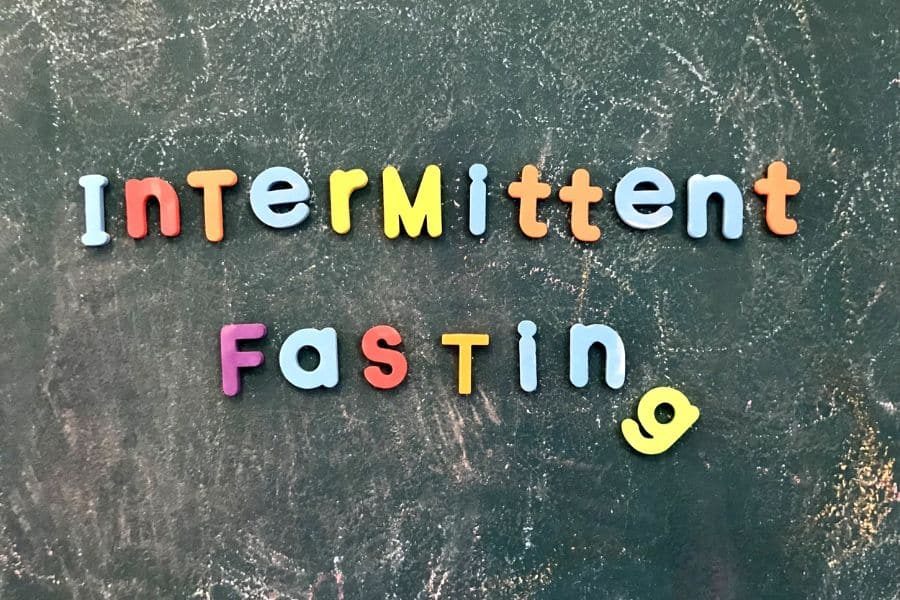Intermittent Fasting Basics
Understanding Intermittent Fasting
Intermittent fasting (IF) isn’t your typical diet; it’s more of a timetable for eating and not eating. Instead of focusing on what you eat, it zeros in on when you eat. You choose specific times to eat and take a break from food at other times. The goal is to manage your eating habits that might just give your health a good nudge in the right direction. Different strokes for different folks here, as there are various ways to do this—each having its “on” and “off” hours.
How Intermittent Fasting Works
The magic of intermittent fasting happens when you give your body a little break from munching. Extended food-free periods kick off something called metabolic switching. According to some smart folks at Johns Hopkins Medicine, when the sugar stash runs dry, your body’s gotta burn fat for energy. This whole process could help you shed pounds and boost your health.
A popular plan is the 16:8 schedule. It means fasting for 16 hours then having at it during an 8-hour eating window. Known as the Leangains method, it’s a favorite for folks looking to manage weight and balance blood sugar, as noted by Medical News Today.
Intermittent fasting isn’t just about slimming down; it’s also a superhero against insulin resistance, possibly lowering your chances of getting type 2 diabetes (Medical News Today).
| Health Benefits | Supporting Research |
|---|---|
| Weight Management | 11 out of 13 studies showed weight loss (Healthline) |
| Metabolic Effects | Fires up metabolic switching (Johns Hopkins Medicine) |
| Disease Prevention | Fights against diabetes, heart disease, and disorders in the brain (Johns Hopkins Medicine) |
Thinking about giving intermittent fasting a whirl? Make sure it vibes with your lifestyle and health needs. Chatting with a healthcare pro is a good idea to keep you on the safe side. For more tips on making an intermittent fasting schedule that fits your lifestyle, check out our personalized guidance section.
Hungry for more? Sneak a peek at our articles about intermittent fasting benefits, intermittent fasting weight loss, and intermittent fasting for beginners.
Popular Intermittent Fasting Methods
Trying out different intermittent fasting plans? You’re figuring out which one jives best with your routine and health targets. Here’s a breakdown of the hits among fasting fans.
16/8 Intermittent Fasting
With the 16/8 method, you’re fasting for 16 hours and munching in the remaining 8. Known as the Leangains diet, it’s all the rage for weight control and keeping blood sugar in check. Great for folks who can’t say no to structure or who are just dipping their toes into the fasting scene.
| Aspect | Detail |
|---|---|
| Fasting Duration | 16 hours |
| Eating Window | 8 hours |
| Suitable For | Newcomers, routine lovers |
| Health Benefits | Manage weight, tame blood sugar |
Need more deets on getting started? Peek at our beginner’s guide to intermittent fasting.
5:2 Intermittent Fasting
The 5:2 gig lets you eat normally for five days and limit calories to about 500 for two days. Eating lots of fiber and protein on those fasting days can make those hunger growls a bit less loud, according to experts.
| Aspect | Detail |
|---|---|
| Fasting Days | 2 days a week |
| Caloric Intake on Fasting Days | ~500 calories |
| Suitable For | Flexible schedulers |
| Health Benefits | Shed pounds, boost metabolism |
Curious how to tweak this for your needs? Take a look at our meal plan suggestions.
Eat-Stop-Eat Intermittent Fasting
Then there’s Eat-Stop-Eat, where you give food a timeout for 24 hours once or twice each week. Pick any stretch that fits, and keep sipping on water or herbal teas for hydration.
| Aspect | Detail |
|---|---|
| Fasting Duration | 24 hours |
| Frequency | 1-2 times per week |
| Suitable For | Seasoned fasters |
| Health Benefits | Cell repair, kickstart autophagy, weight management |
Want to nail this fasting approach? Visit our autophagy and fasting page.
Warrior Diet Intermittent Fasting
The Warrior Diet’s about fasting for 20 hours daily with a 4-hour chow-down window. Sneak in some fruits or veggies during fasting if hunger strikes. Many say it channels the eating style of ages ago warriors.
| Aspect | Detail |
|---|---|
| Fasting Duration | 20 hours |
| Eating Window | 4 hours (typically night) |
| Suitable For | Pro fasters, night eaters |
| Health Benefits | Burn fat, energy boost, up mental game |
For savvy tips on rocking the Warrior Diet, hop over to our piece about fasting and exercise.
Picking the fasting method that clicks with you could be your ticket to better weight control and overall wellbeing. For more on how this fasting thing might benefit you, swing by our intermittent fasting benefits page.
Health Benefits of Intermittent Fasting
Intermittent fasting is a neat trick for boosting your health game, especially when it comes to wrangling weight, revving up metabolism, and dodging disease. So, what’s the fuss all about? Let’s jump into how giving your meal times a makeover can spruce up your health journey.
Weight Management Benefits
Trying to shed a few pounds or keep them at bay? Intermittent fasting has got your back. Take the 16:8 setup, for instance—grab grub during an 8-hour window, then fast for the other 16. This style not only helps with your weight but also keeps your blood sugar in line (Medical News Today). According to the science guys, nearly all of the 13 studies they peeked at showed folks losing weight (Healthline). Want the skinny on how it helps drop pounds? Check out our intermittent fasting weight loss guide.
| Studies Peeked At | Weight Shed Results |
|---|---|
| 11 out of 13 | Boom! Weight Loss! |
Metabolic Effects of Intermittent Fasting
Fancy speeding up that metabolism? Intermittent fasting might be your ticket. It’s about cutting those insulin and sugar levels, lowering that diabetes risk (Healthline). Plus, it gets your body swapping fuel types—say, burning off fat when sugar’s gone missing during the fasting hours (Johns Hopkins Medicine). Handy for dropping pounds and beefing up metabolic health.
For more on burning fat with this method, stroll over to our intermittent fasting for fat loss section.
Disease Prevention Benefits
Dodging health issues is another plus of intermittent fasting. It’s like a shield against stuff like type 2 diabetes, heart troubles, brain drain, tummy issues, and some cancers (Johns Hopkins Medicine). By keeping inflammation low and sorting out bad vibes, fasting might be your health ally.
For a close-up view on how all this works, don’t miss our take on intermittent fasting benefits.
Now that you’ve got the scoop on fasting, you can mix and match a schedule that suits your health checklist. Need a rookie’s roadmap? Head over to our intermittent fasting for beginners for some pointers.
Potential Risks and Considerations
Hey folks, let’s chat about intermittent fasting. It’s got its perks, but also a few hiccups you might want to dodge. Knowing what sort of bumps might pop up can be your ticket to smoothing out the ride as you think about tossing intermittent fasting into your daily groove.
Side Effects of Intermittent Fasting
Getting started with intermittent fasting? Brace yourself for a few side effects that might come knocking at your door, especially if you’re new to the game. Here’s a quick rundown:
- Headaches: Missing meals can leave you lightheaded with low blood sugar.
- Lethargy: Eating at set times might zap your energy, leaving you dragging.
- Crankiness: Skipping meals ain’t all sunshine and rainbows—you might feel quite snappy.
- Constipation: Your tummy might feel a bit off with new eating flow.
| Side Effect | Why it Happens |
|---|---|
| Headaches | Blood sugar plummets |
| Lethargy | Not enough fuel in the tank |
| Crankiness | Mood swings from skipping meals |
| Constipation | Your system playing catch-up |
Drink plenty of water, chow down on well-rounded meals during eating hours, and ease into the fasting groove to dodge these side-effects.
Safety Concerns
Intermittent fasting isn’t everyone’s cup of tea, particularly if you’ve got specific health quirks. You might wanna watch out for:
- Medication Mix-Ups: Folks on meds for diabetes or heart-related stuff could run into snags when skipping meals.
- Mineral Mayhem: Cutting back those calories might mess with your mineral balance.
- Hormonal Havoc: Fasting is notorious for stirring up hormonal whirlwinds, especially for women.
A 2024 study tossed around the idea that limiting eats to an 8-hour window could up the chances of heart hassles. Just a heads up, the study’s still under review and not gospel yet!
Individualized Approach
Your body, your rules! Tailoring intermittent fasting means jotting down what suits your health, lifestyle, and game plan best. Before pounding the fasting pavement, a nudge from a healthcare pro can guarantee it vibes with you (Johns Hopkins Medicine).
Think about:
- Health Baggage: Making sure your health history won’t clash with fasting.
- Personal Targets: Deciding if your path is weight loss, fat melting, or fine-tuning metabolism.
- Flexibility: Mixing and matching fasting styles to find the right fit, like trying a looser routine if necessary.
By keeping an eye on these points, you can better roll with intermittent fasting while keeping your well-being front and center.
Curious to learn more? Check out our easy-to-follow guides on intermittent fasting for beginners and meal plans to dive in safely.
Intermittent Fasting Schedules
Picking the right intermittent fasting plan can make a world of difference in how you tackle weight management and boost your overall well-being. Here’s a look at a few popular ways you might wanna give a go.
16:8 Method Explained
The 16:8 plan, or the cool name ‘Leangains diet’, is nice and simple to squeeze into everyday life. You’re looking at fasting for 16 hours and then chowing down on your grub during an 8-hour stretch. According to Medical News Today, this approach not only helps keep your waistline in check but also makes your blood sugar behave, especially if you’re struggling with the extra pounds.
| 16:8 Schedule Example |
|---|
| 8:00 AM – 12:00 PM: Fasting |
| 12:00 PM – 8:00 PM: Eating Window |
| 8:00 PM – 8:00 AM: Fasting |
Why does the 16:8 method fit like your favorite pair of jeans? Well, it tacks on to your overnight fast, making it all the more easy-peasy. If you’re game to start, we’ve rounded up nifty tips in our intermittent fasting for beginners guide.
Alternate Day Fasting
Here’s where you shake things up a bit: alternate day fasting. You feast one day, then hit the brakes the next with either a fast or a teeny-tiny calorie intake. Johns Hopkins Medicine vouches that this method’s a strong contender for weight loss, but fair warning, the seesawing calorie count isn’t a cakewalk to stick with.
| Alternate Day Fasting Schedule Example |
|---|
| Monday: Normal Caloric Intake |
| Tuesday: Fasting/Very Low Calorie |
| Wednesday: Normal Caloric Intake |
| Thursday: Fasting/Very Low Calorie |
| Friday: Normal Caloric Intake |
| Saturday: Fasting/Very Low Calorie |
| Sunday: Normal Caloric Intake |
Before diving into alternate day fasting, it’s worth a chinwag with your doc to make sure it’s a-ok for you (consulting healthcare providers).
24-Hour Fasting and Warrior Diet
Taking 24-hour fasting for a spin (Eat-Stop-Eat style) means going without for a whole day once or twice a week. Then you’re back to your regular noshing routine on other days.
| 24-Hour Fasting Schedule Example |
|---|
| Monday: Normal Eating |
| Tuesday: Fasting |
| Wednesday: Normal Eating |
| Thursday: Normal Eating |
| Friday: Fasting |
| Saturday: Normal Eating |
| Sunday: Normal Eating |
If you’re feeling adventurous, there’s the Warrior Diet with a 20-hour fast and a short 4-hour chow time. Nibble on tiny snacks during fasting – maybe a slice of fruit or a carrot stick or two – with a big meal waiting in the wings come evening. This one’s a wild ride and might not mesh well with everyone’s needs (Medical News Today).
| Warrior Diet Schedule Example |
|---|
| 8:00 AM – 6:00 PM: Fasting (small snacks like fruits or vegetables allowed) |
| 6:00 PM – 10:00 PM: Eating Window (one large meal) |
| 10:00 PM – 8:00 AM: Fasting |
Checking these schedules out can steer you to the routine that clicks with your own groove and ambitions. For even more scoop on the perks of intermittent fasting, mosey over to our benefits page.
Personalized Guidance for Intermittent Fasting
Intermittent fasting isn’t a one-size-fits-all plan. When you’re setting up your fasting schedule, getting some personalized tips can help keep things safe and effective for you.
Chatting with Your Doctor
Before you jump into any fasting routine, it’s smart to have a chat with your healthcare provider. Safety is key, and fasting isn’t everybody’s cup of tea (Johns Hopkins Medicine). Folks with certain health issues, like diabetes or heart troubles, need to be extra careful.
Your doctor can make sure fasting’s safe for you and clue you in on how it might mess with any meds you’re on. Long fasting hours might not mix well with some meds, causing things like mineral imbalances.
Making Fasting Fit You
Everybody’s different, so not everyone will take to the same fasting style. Crafting a fasting plan that suits you involves looking at your health goals, daily grind, and any medical stuff you’ve got going on.
Check out these popular fasting methods and see if one of them might float your boat:
| Fasting Method | Duration | Who It’s Best For |
|---|---|---|
| 16/8 Method | Fast for 16 hours, eat during an 8-hour window | Busy peeps with a steady daily schedule |
| 5:2 Method | Eat normally for 5 days, 500-600 calories on 2 non-consecutive days | Good for folks wanting to ease in slowly |
| Eat-Stop-Eat | 24-hour fast once or twice a week | For seasoned fasters or those needing a kick |
| Warrior Diet | 20-hour fast, 4-hour eating window | Night owls who like bigger meals late |
Trying out these methods can help you find the one that clicks with your goals and lifestyle. Our meal plan for intermittent fasting can help you figure out when to eat so you nail your nutrition.
Doing Intermittent Fasting Safely
When you bring fasting into your life, safety’s gotta be first. To dodge headaches, feeling wiped out, being grumpy, or being backed-up (Harvard Health Publishing), try these simple tips:
- Drink Up: Keep your water bottle handy so you stay hydrated while fasting.
- Go Slow: Kick off with shorter fasts and stretch them out as you get used to it.
- Eat Smart: Make sure your meals are packed with nutrients, full of all the good stuff.
- Tune In: Keep an eye on how you feel and tweak your fasting if you’re feeling off.
Keep in mind, fasting is a tool to boost your health, not to put it at risk. If you’re starting out, our beginner’s guide to intermittent fasting is a solid first step. Tailor your routine with your doctor’s help and always put your well-being first.










